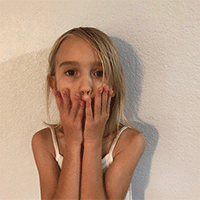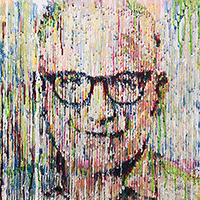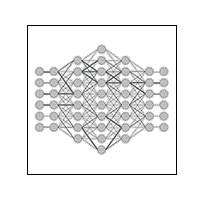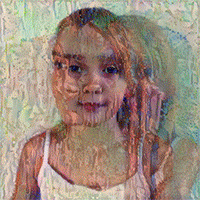The Creative AI Process
Creativity is not a single process, but many processes competing with each other to create beauty.
Below is a visual simplification of the more than two dozen AI processes that cloudpainter uses to complete a painting.
Each portrait begins with a face.
Neural Nets (GANs) study and reimagine the face.
Previous AI paintings are referenced by…
more neural nets (CNNs) to create stylized images.
Dozens of algorithms then use AI & visual feedback loops (VFLs)
to bring beauty out of a blank canvas.
A Society of Creative Minds
Marvin Minsky, the co-founder of MIT’s Artificial Intelligence Lab, proposed that our minds are not a single super intelligence, but rather a collection of smaller intelligences that surface as needed and compete with each other to solve problems. He called this concept a Society of Minds. Making artistic paintings with my robots is a problem just like any other, and Minsky’s approach has proven remarkably effective at solving it. In fact, the more paintings I create with this approach, the more I am beginning to realize that artistic creativity is little more than a complex mix of competing generative art algorithms.
Our current process uses over two dozen competing AI algorithms, however, the most prominent are the following three:
1: Generative Adversarial Networks (GANs) that imagine portraits.
2: Convolutional Neural Networks (CNNs) that apply a style to imagined portraits.
3: Visual Feedback Loops (VFLs) that paint and analyze one brushstroke at a time.
Simplifying to a great extent, the visual flow of the algorithm is at the header of this page. If you want to go in depth, you can read up on it in this medium article…
While some individual algorithms are more creative than others, the most important element of this generative A.I system is that there are more than two dozen of them fighting for control of the paint brush. This includes the deep learning GANs, CNNs, many procedural A.I. algorithms such as k-means clustering, multiple facial recognition programs, and even fuzzy logic that attempts to rate the aesthetic appeal of the painting as it is being completed.
Not always, but sometimes when all the algorithms work with and fight against one another in just the right way, they arrive at a portrait like the work featured above.
Pindar








